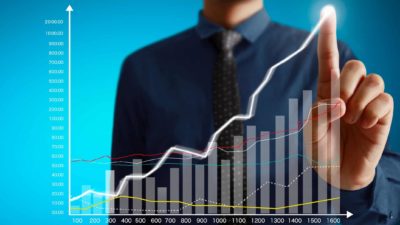Real estate investment and ASX shares investment both require careful research and planning.
While past returns are not a guarantee of future returns, it's useful to canvas the historical performance of both investment options in terms of yield and capital growth to get an idea of how things work.
We recently took a deep dive into yields and compared how current dividend yields stack up against the booming rental returns being achieved in Australia's capital cities and regions today.
In this article, we're going to focus on the history of capital gains, or asset price growth, for shares vs. property over the past decade.
Will a real estate investment deliver better capital growth?
Every Aussie has heard the urban legend of 'property doubling every 10 years'.
Maybe it's happened in Sydney, I'll grant you.
But it's not the typical experience of most investors across Australia's various city and regional markets.
However, it's definitely fair to say that real estate investment can deliver exceptional capital growth.
Indeed, CoreLogic data shows the median house price across the combined capital cities has risen about 70% over the past 10 years. It went from $520,000 at 30 June 2013 to just over $882,000 at 30 June 2023.
Apartment values do not rise as fast as house values because there's no significant land component in their valuation. Therefore, there's less of that scarcity factor that pushes house values harder.
According to CoreLogic, the median apartment price across the combined capital cities rose 43% over the decade. It lifted from $440,000 in 2013 to just under $630,000 in 2023.
Let's compare this capital growth to ASX shares
Over the past 10 years, the S&P/ASX 200 Index (ASX: XJO) has risen by 46%. It closed on 28 June 2013 at 4,802.6 points and closed on 30 June 2023 at 7203.3 points.
So, on the surface, it appears that property investment houses win in terms of the capital gains of shares vs. property. But you actually have to look a little deeper to get a proper picture of your profits.
You see, we've all heard those fantastic stories of real estate investment.
They go like this:
I bought it for $950,000 and sold it for $1.3 million just five years later.
That sounds awesome.
A $350,000 capital gain in just a few short years? Oh, hell yes!
That's a 37% capital gain over five years, which we can extrapolate to 70% or thereabouts over 10 years. And that's exactly what the CoreLogic data shows.
But what this excited storyteller is leaving out, though, is the costs of real estate investment.
The costs of real estate investment
So, in this above scenario, the typical costs are:
- $37,485 in stamp duty (in NSW) on the purchase
- $500 for a building and pest report
- $2,000 on the purchase conveyance
- $10,000 to replace the carpet and hot water tank (or some other darn thing) during those five years
- $15,000 spent on re-painting, styling and marketing when it comes time to sell
- $26,000 in agent's commission (2%)
- Another $2,000 on the sale conveyance.
We'll assume the holding costs of, say, $7,000 to $10,000 per year to cover strata levies, council and water rates, repairs, insurances, and property management fees are covered by the rental returns — or yield.
We're also excluding loan interest and capital gains taxes because you'd pay them on ASX shares investments, too. We're just demonstrating that real estate investment involves costs that shares do not, and they have to be factored in to give you a realistic picture of prospective capital gains.
So, those capital costs and transactional costs outlined above total … drum roll please … $92,985 (most of which is tax-deductible, by the way).
Does the property investor still come out on top?
Of course they do.
We're talking about the phenomenon that is Australian property!
Our investor made a $350,000 gain in exchange for about $93,000 in costs. But the point is, the gain is not as big as the story you'll hear on the street.
The net capital gain in our example is now 27% over five years, which we can extrapolate to about 50% over 10 years. That's roughly the same capital growth rate delivered by ASX 200 shares (46%).
The moral of the story: The shares vs. property debate is wasted labour. Why bother arguing? Just do both. If nothing else, it's a great way to diversify your investments.
Foolish takeaway
The key thing to remember when buying investment property is that the high costs mean you have to adopt a long game.
Ideally, you want to hold your real estate investment property through at least a couple of market cycles to really maximise those capital gains.
This also gives you time to potentially improve the property's value through renovations.
On the other hand, ASX shares investments afford investors the opportunity to realise high and unexpected capital gains immediately.









